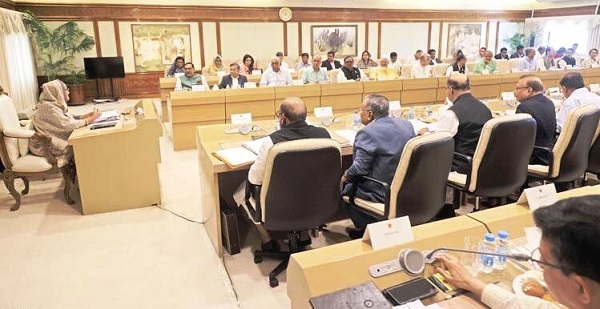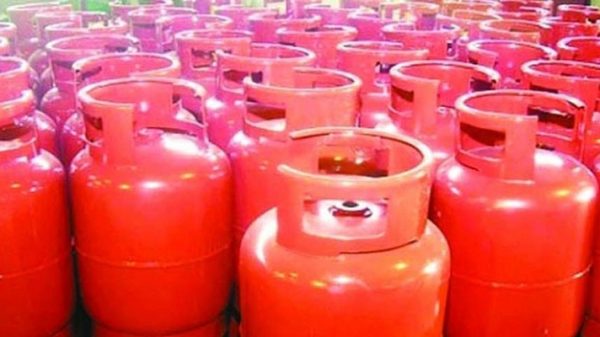Thousands stranded in flash flood again

Shawdesh Desk;
Hundreds of people have left their homes for higher ground in the five districts of Rangpur division that have been ravaged by a flash flood since Friday.
Tens of thousands of others also got stranded in over 300 chars dotting numerous northern rivers, including the Teesta, which was flowing above its danger mark for the second day on Saturday, with vast stretches of their agricultural lands going under water.
The flash flood struck after India opened the floodgates at the Gajaldoba barrage on Thursday night following heavy rains, releasing massive volumes of water without warning.
This was the eighth wave of flash floods since June to hit the northern districts, prompting many inhabitants to leave their houses several times and undertake treacherous journeys through some of the country’s wildest rivers.
The arbitrary opening and closing of floodgates at the Gajaldoba barrage causes the Teesta River to rapidly rise and drop, each time sweeping away scores of residences and eroding vast stretches of land.
‘Bangladesh is paying the price for its failure to negotiate with India over the management of common rivers,’ said Tuhin Wadud, director of Riverine People, a knowledge-based civil society movement to restore and conserve rivers.
Coordination among river commissions in the neighbouring countries could have helped people downstream prepare better, particularly in the event of heavy rain, he said.
‘Tackling a huge volume of water suddenly for one of the poorest people living in rickety housing is hard,’ Tuhin added.
Asfa-Ud-Doula, executive engineer of the Water Development Board at Teesta Barrage’s Dalia zone, said that they were trying to coordinate with India for better water management.
People in the north, however, have yet to experience the worst, warned authorities, saying that all major northern rivers might cross their danger limits today following continued heavy to very heavy rain in Bangladesh and upstream India.
‘All major rivers in Lalmonirhat, Rangpur, Kurigram, Gaibandha, and Nilphamari might cross their danger limit in the next 24 hours,’ said Ahsan Habib, superintendent engineer, Rangpur region, WDB.
The Teesta rose by 7cm and 42cm at Dalia and Kaunia points, respectively, in the 24 hours until 9:00am on Saturday, flowing 7cm and 41cm above their danger marks, the Flood Forecasting and Warning Centre of WDB said.
The flood situation in low-lying areas of Lalmonirhat, Nilphamari, and Rangpur districts might stabilise in 24 hours, said a bulletin of the FFWC issued on Saturday afternoon.
The Surma, Kusiyara, Someshwari, Jadukata, Bhugai, and Sarigowain might also rapidly increase over the next 24 hours, the FFWC said.
This was the second time in less than two weeks that a flash flood struck Rangpur division.
Rangpur divisional commissioner Habibur Rahman said that over one lakh people in 16 upazilas have been affected by the flash flooding.
‘We have responded with relief to minimise the sufferings of these people,’ he said.
The sufferings of domesticated animals are particularly high because their grazing grounds have gone under water, and many of their owners have no alternative to feeding them.
The flash flood has washed away many roads and breached some embankments, leading to the inundation of many villages.
The destruction of a road in Dohogram union in Patgram left 200 people cut off from road communication.
Rangpur’s Gangachra upazila’s Lokkhitari union parishad chairman Al Hadi said that the strong Teesta flow washed away two sand dams, leaving many families stranded.
Kurigram’s deputy commissioner, Mohammad Saidul Arif, said that 10,500 families were stranded in the district.
New Age correspondent in Kurigram reported that scores of houses got submerged in waist-deep water.
‘The char people are in great trouble,’ said Insaf Ali, a resident of Nayarhat union.
Many farmers in Kurigram were planning to expand their aman cultivation, but their hope was buried.
Most of the rivers in the Brahmaputra and Ganges basins swelled in the 24 hours until Saturday morning, up to 2 metres, according to the FFWC.
Over the same period, the FFWC said, the country’s highest rainfall of 132mm was recorded in Bandarban, followed by 125mm of rain recorded in Kurigram, 114mm of rain recorded in Nilphamari and 105mm of rain recorded in Sherpur.
The Bangladesh Meteorological Department predicted the ongoing rain spell would reduce over the next three days.
The India Meteorological Department predicted heavy to very heavy rainfall to continue in areas of upstream Bangladesh today.
In the 24 hours until 8:30am on Saturday, the IMD said, Bihar recorded 170 per cent excessive rain, followed by 134 per cent excessive rainfall recorded in Nagaland, 98 per cent excessive rainfall recorded in West Bengal, 73 per cent excessive rain recorded in Arunachal Pradesh, 72 per cent excessive rain recorded in Assam, 71 per cent excessive rain recorded in Mizoram, 47 per cent excessive rain recorded in Meghalaya, 46 per cent excessive rain recorded in Tripura, and 41 per cent excessive rain recorded in Sikkim.























Leave a Reply